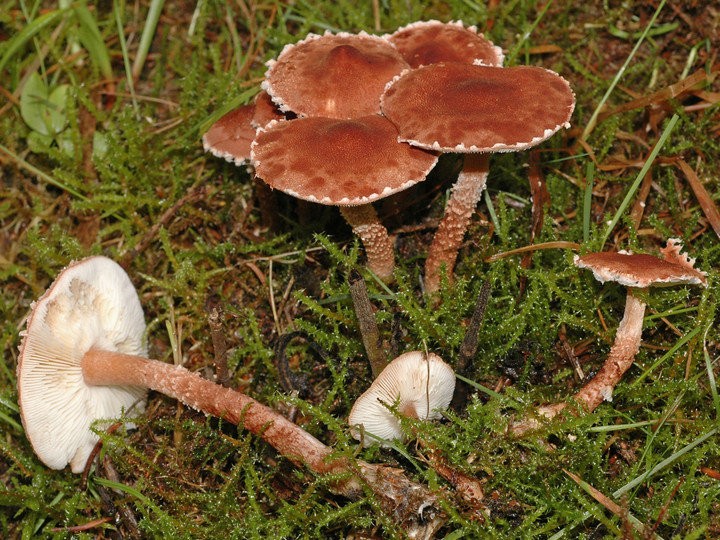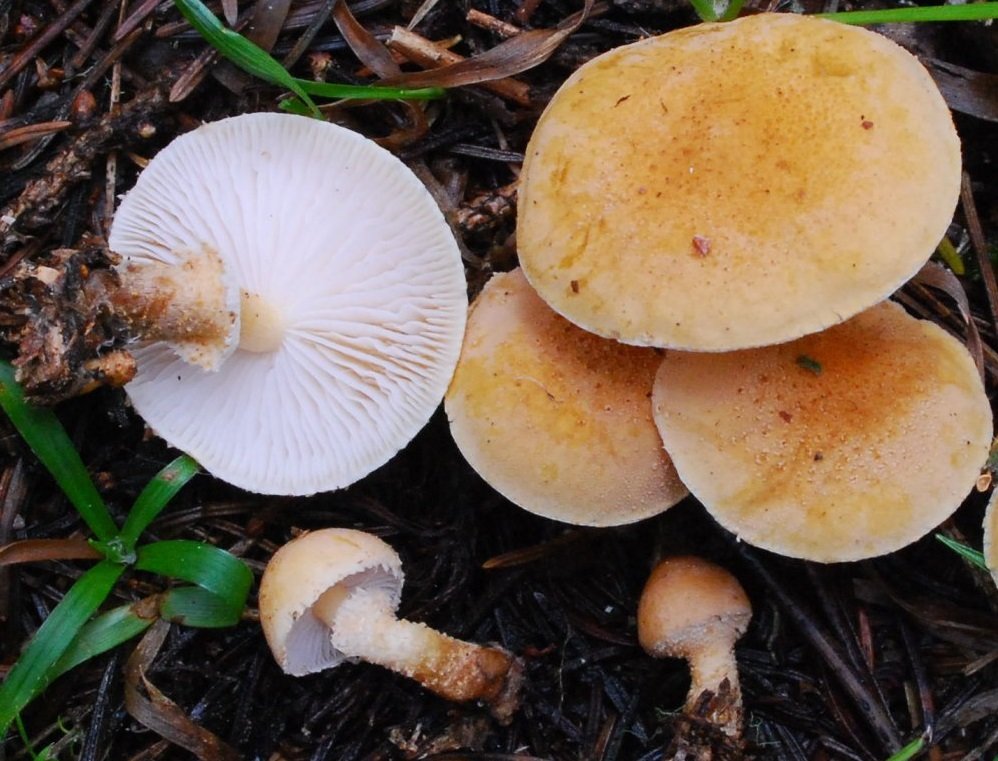Granular cystoderma (Cystoderma granulosum)
- Vaega: Basidiomycota (Basidiomycetes)
- Vaevaega: Agaricomycotina (Agaricomycetes)
- Vasega: Agaricomycetes (Agaricomycetes)
- Vasega laiti: Agaricomycetidae (Agaricomycetes)
- Poloaiga: Agaricales (Agaric poʻo Lamellar)
- Aiga: Agaricaceae (Champignon)
- Ituaiga: Cystoderma (Cystoderma)
- ituaiga: Cystoderma granulosum (Granular cystoderma)
- Agaricus granulosa
- Lepiota granulosa

ulu granular cystoderm small, 1-5 cm ∅; in young mushrooms – ovoid, convex, with a tucked edge, covered with flakes and “warts”, with a fringed edge; in mature mushrooms – flat-convex or prostrate; the skin of the cap is dry, fine-grained, sometimes wrinkled, reddish or ocher-brown, sometimes with an orange tint, fading.
faamaumauga almost free, frequent, with intermediate plates, creamy or yellowish white.
vae cystoderm granular 2-6 x 0,5-0,9 cm, cylindrical or expanded towards the base, hollow, dry, of the same color with a cap or lilac; above the ring – smooth, lighter, below the ring – granular, with scales. The ring is short-lived, often absent.
Pulp whitish or yellowish, with an unexpressed taste and smell.
E pa'epa'e le pauta o le spore.

Ecology ma tufatufaga
Widely distributed throughout Europe and North America. It grows scattered or in groups, mainly in mixed forests, on soil or in moss, from August to October.
Meaʻai i mea taumafa
Conditionally edible mushroom. Use fresh.









